The Great Reframing of 1912
Imaginary Armies
At the start of 1912, the armies of the German Empire were formed into twenty-three army corps, each of two infantry divisions. Each infantry division, in turn, consisted of two infantry brigades, each of which was made up of two infantry regiments.1 Later that year, an anonymous officer published an article proposing the replacement of the binary army corps of the German Empire with triangular formations.2
Finding the infantry regiments needed to organize seventy-two triangular infantry divisions would not be difficult. Thanks to the existence of thirty-two supernumerary infantry regiments, German Empire already possessed all of the units of that sort needed to fill out seventy-two divisions. Indeed, the number of infantry regiments needed to form a total of seventy-two triangular infantry divisions corresponded perfectly to the number of such units on hand.
What was true for infantry was also true for cavalry. In existing binary army corps, each of the two infantry divisions received, on mobilization, a four-squadron cavalry regiment. According to the scheme proposed by the anonymous author, each of the recast army corps would receive the same number of four-squadron regiments. However, rather than being parceled out to infantry divisions, the two cavalry regiments would form a cavalry brigade, the commander of which would report directly to the general officer commanding the army corps.
Finding enough field artillery for the new triangular army corps would not be as easy. The anonymous advocate of the recasting of German formations solved this problem by removing a section of two guns (or howitzers) from each of the six-piece batteries assigned to infantry divisions. Once these sections were assembled into new four-piece batteries, the German armies would have the means to create two six-battery field artillery regiments to each of the new infantry divisions.
All other things being equal, a four-piece battery generated less in the way of firepower than a six-piece battery. However, many artillery officers of the early twentieth century argued that the relative ease with which a four-piece battery could be commanded, moved, and, most of all, hidden, made it a better building block for artillery battalions, regiments, and brigades than a unit armed with six guns or howitzers. To put things another way, reducing the number of artillery pieces in a battery by a third diminished the effectiveness of that unit by much less than thirty-three percent.
Between 1912 and the outbreak of the First World War two years later, no one in the war ministries of the German Empire acted upon the proposal to replace binary formations with triangular army corps and infantry divisions. Soon after the start of the war, however, the German war ministries began to incorporate elements of the anonymous author’s proposal into programs for the raising of new formations. In particular, the raising of new divisions often involved the creation of new field artillery units out of sections withdrawn from six-piece batteries as well as the transfer of the fourth infantry regiments of binary divisions to triangular formations.3
It was only in the realm of mounted troops that the creation of actual triangular divisions of the First World War differed greatly from the scheme proposed in 1912. This was, as might be expected, a function of all of the forces, from a shortage of horseflesh to the onset of position warfare, that caused the cavalry of the German armies to shrink at a time when all other arms were expanding.
For Further Reading:
In addition to the forty-six infantry divisions organic to the twenty-three army corps, there were two extra infantry divisions, each of which was temporarily assigned to an army corps. All concerned assumed that, at some time in the near future, the two extra divisions would be formed into a new army corps. For details, see pages 3 and 4 of the issue for 1911 of the annual publication Löbell’s Jahresberichte.
Anonymous, “Kriegs- und Friedensgliederung des Armee Korps,” Jahrbücher für die Deutsche Armee und Marine, 1912, pages 274-282



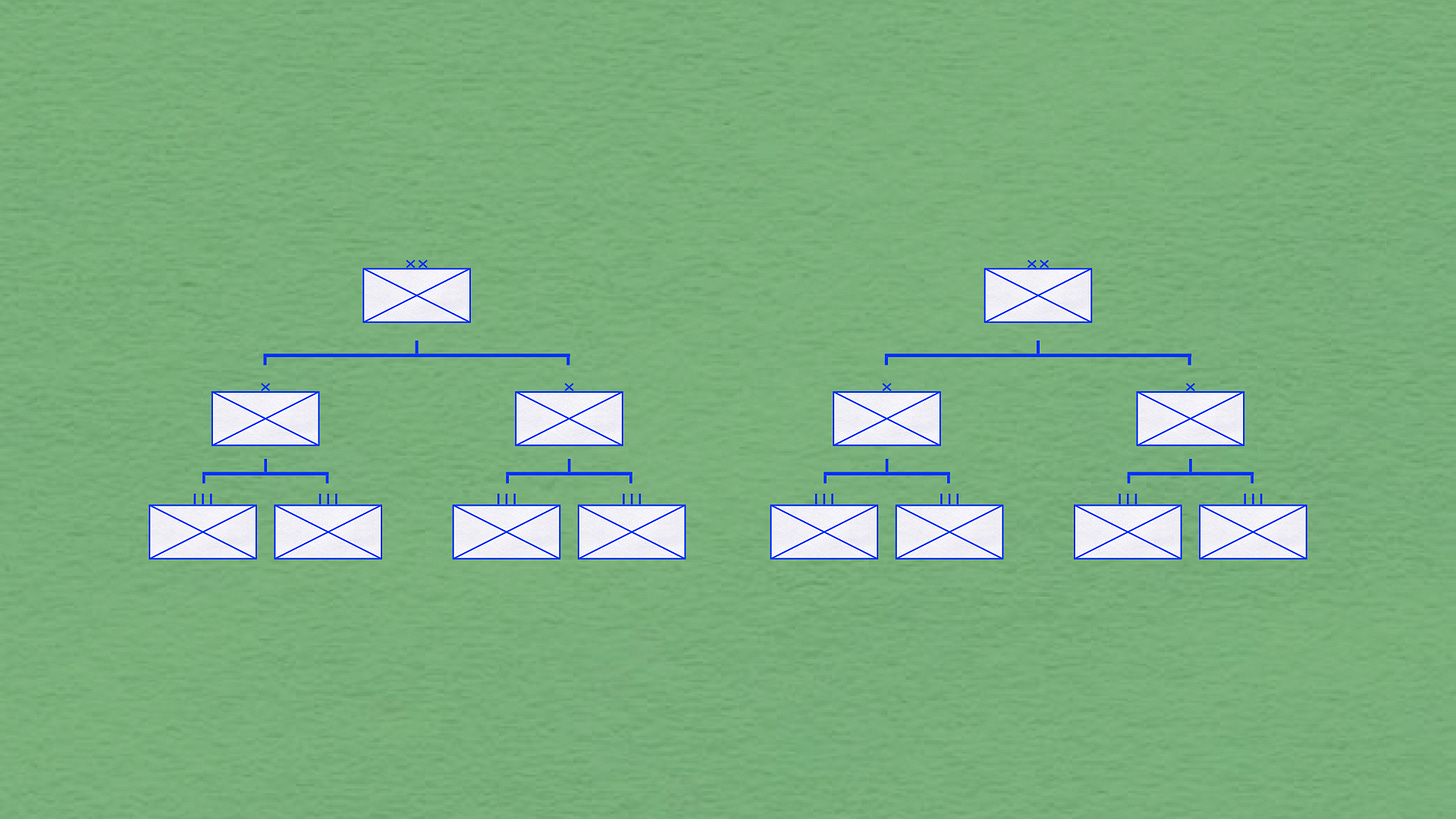
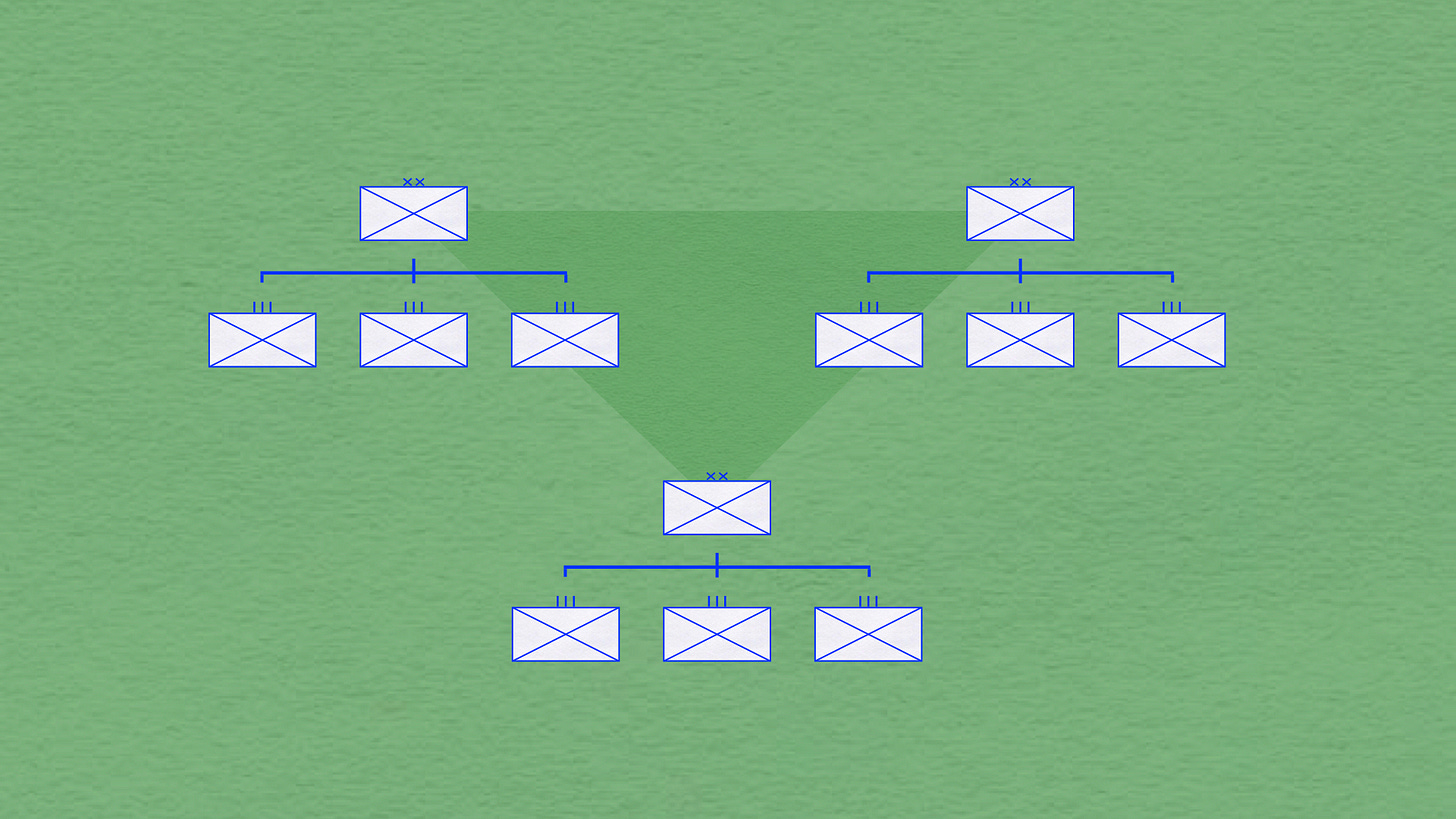
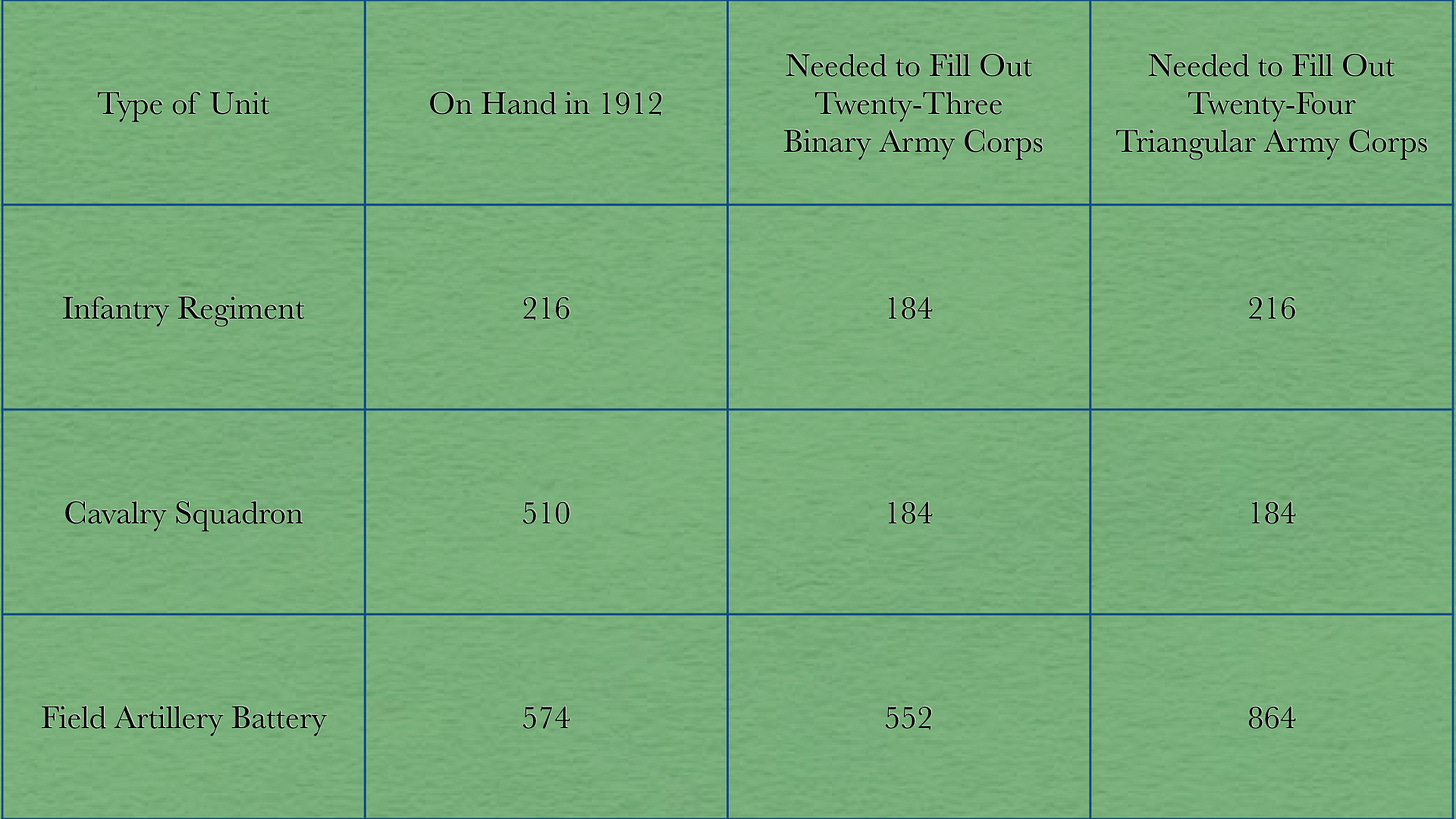
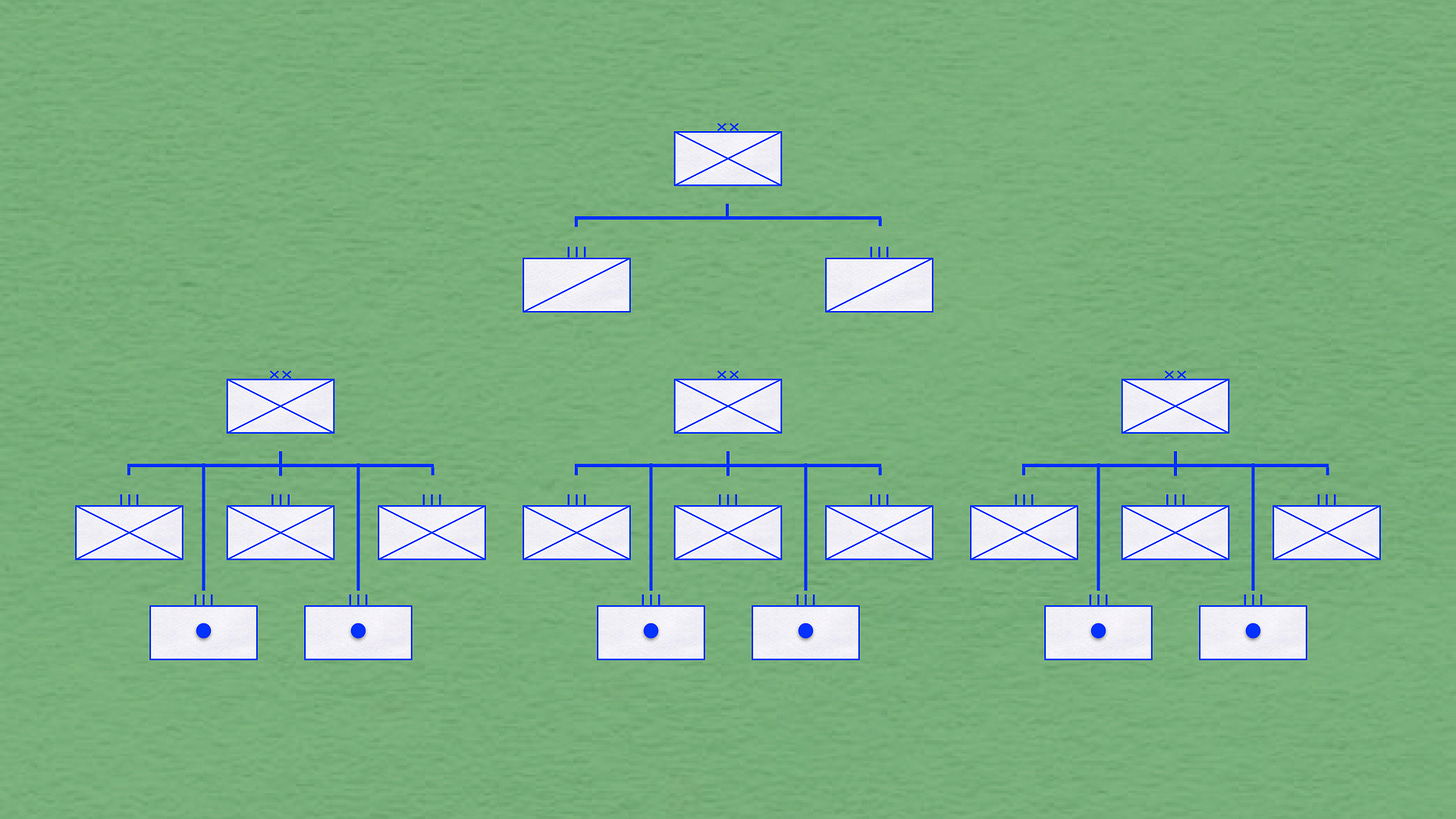
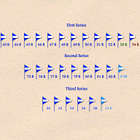
I wonder if the OHL attempted to track down the author after they started to change the organizations.
Speaking of;
Did the author mention any changes to engineers and medical units?
I assume that each division would have a company of each.
Certainly a more visually pleasing structure than the previous one.
Also, does it mention if the infantry and artillery brigades be retained, like they were during the wartime re-orgs?
And one slight issue, the cavalry brigade is displayed as an infantry division.